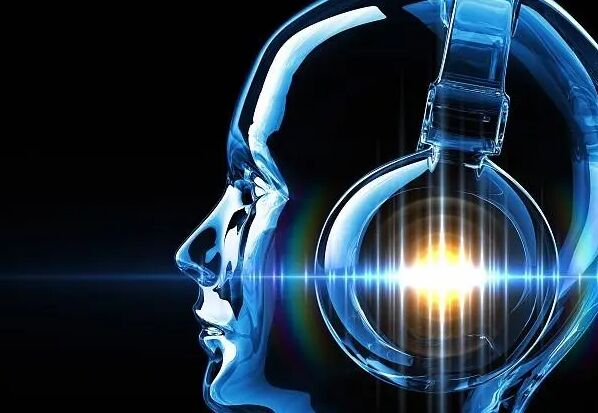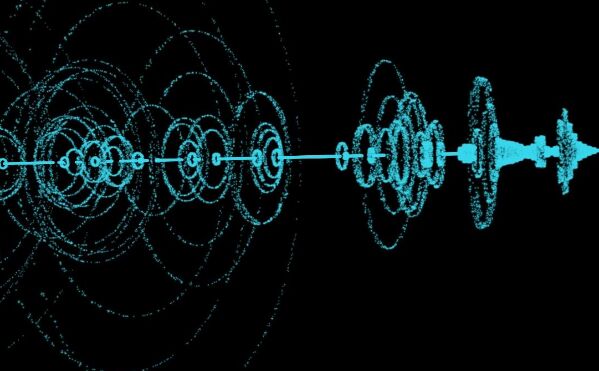By Texas Instruments 162
Audio products are specially designed and prepared devices, tools or software for processing, transmitting, storing or playing back audio signals. Audio products also include audio codecs, audio processing software, audio file formats, audio storage media, and more.Audio ICs

Ⅰ. Common audio products
1.Audio Processor: The audio processor is used to process and effect the audio signal. It can include modules such as equalizers, compressors, reverbs, delays, etc., which are used to adjust the frequency response, dynamic range, spatial effects and time delay of audio, etc.
2.Digital Audio Workstation, DAW: Digital Audio Workstation is a professional audio recording, editing and mixing system. It combines software and hardware devices to provide a wide range of audio processing and production functions, and is widely used in music production, film sound effects, broadcast production and other fields.
3.Audio Player: An audio player is a device or software used to play audio files. It can play audio files in various formats, such as MP3, WAV, FLAC, etc., and provide playback and control functions for music, radio, podcasts and other media content.
4. Audio Interface: An audio interface is a device that connects an audio device (such as a microphone, musical instrument) to a computer or an audio system.
5. Loudspeaker: A loudspeaker is a device that converts electrical signals into sound. It is used in audio playback, music performances, television and theater sound systems, and more.
6. Headphones and speakers: Headphones and speakers are devices used for personal audio monitoring. Headphones are usually worn on the head, placed directly over the ears. In the present electronic information age, people are inseparable from earphones, especially bluetooth earphones, which are popular among people and bring convenience to people; and loudspeakers are placed near the ears or in the ear canal.
7. Microphone: A microphone is a device that converts sound into electrical signals. It is widely used in audio recording, speech communication, speech and music performance and other occasions. There are many types of microphones, including dynamic microphones, condenser microphones, wireless microphones, and more.
Ⅱ. The role of audio products
1. Entertainment and media consumption: Audio products such as music players, headphones, speakers, etc. provide the playback and enjoyment of entertainment content such as music, movies, and podcasts.
2. Health and relaxation: Audio products such as white noise machines, relaxation music players, etc. are used to help people relax, improve sleep, reduce stress and anxiety, etc. for health and relaxation effects.
3. Speech recognition and smart assistants: Audio products such as speech recognition devices and smart speakers are used to convert spoken input into text or execute voice commands, helping people realize intelligent voice interaction and control.
4. Communication and voice communication: Audio products such as mobile phones, telephones, walkie-talkies, etc. are used to realize voice communication between people and help people communicate and communicate remotely.
5. Music creation and recording: Audio products such as microphones, audio interfaces, digital audio workstations, etc. are used for music creation, recording and production, helping musicians and producers achieve professional audio creation and recording processes.
6. Education and training: audio products such as audio education equipment, learning audio recordings, etc. are used in the field of education and training, providing audio education materials, learning aids, and audio assessment functions.
Ⅲ. Audio digital signal processor
An audio digital signal processor is a hardware or software device specifically designed to process audio signals. Audio DSPs play an important role in the field of audio processing and can be used in various applications including music production, audio effects processing, sound enhancement, speech recognition, noise cancellation, etc. They can perform filtering, equalization, reverberation, compression, decoding, encoding and other processing on audio signals to improve and optimize audio effects.Audio DSPs
Applications of audio DSPs:
1. Wireless communication: Audio DSPs are widely used in wireless communication systems, such as mobile phones, earphones, walkie-talkies, etc. They enable functions such as audio codec, noise suppression, and echo cancellation to provide clear voice communication quality.
2. Music production and recording: Audio DSPs can be used for various processing requirements in the music production process, such as audio synthesis, balance adjustment, dynamic processing, reverberation effects, time domain processing, etc., to help music producers achieve the desired sound effects and sound characteristics.
3. Sound enhancement and spatial effects: Audio DSPs can simulate various sound environments for sound enhancement technologies such as stereo expansion, 3D sound effects, surround sound, etc.
4. Speech processing and speech recognition: Audio DSPs also play an important role in the fields of speech processing and speech recognition. They can process voice signals in real time, improve voice quality, reduce noise, cancel echo, and more.
5. Professional audio equipment: Audio DSPs are widely used in professional audio equipment, such as audio mixers, audio processors, effectors, etc.
Ⅳ.Audio A/D Converter ICs
Audio A/D Converter ICs are integrated circuits used to convert analog audio signals to digital audio signals. It is one of the key components in converting continuous analog signals into discrete digital signals.Audio A/D Converter ICs
Audio A/D Converter ICs usually include analog inputs, digital outputs, and control interfaces. The analog input receives the audio signal, which is converted to a digital representation by internal sampling and quantization circuits. The digital output terminal outputs discrete digital audio signals, which can be Pulse Code Modulation, PCM format or other digital audio formats. Audio A/D Converter ICs are widely used in various audio applications, including audio recording equipment, audio interface, audio processing equipment, audio transmission system, etc.
Main features of Audio A/D Converter ICs:
1. Noise and distortion: Audio A/D converter ICs should have low noise and distortion levels to maintain the accuracy and high fidelity of the audio signal.
2. Bit Depth: Indicates the number of quantized bits per sample point, which determines the dynamic range and resolution of the digital audio signal. Common bit depths are 16-bit, 24-bit, and 32-bit.
3.Sampling Rate: Indicates the number of times an analog signal is sampled per second, usually in Hertz.
4. Power consumption: The power consumption of Audio A/D Converter ICs is very important for some applications (such as portable devices), and the power consumption needs to be as low as possible.
Ⅴ.Audio Amplifiers
An audio amplifier is an electronic device used to amplify the voltage or current of an audio signal. It amplifies low-power audio signals from sources such as music players, TVs, radios, etc. to a level sufficient to drive speakers or headphones, producing sufficient sound.Audio Amplifiers
An audio amplifier is a device that reconstructs an input audio signal on an output element that produces sound. It is one of the important components of multimedia products and is widely used in the field of consumer electronics.
The development of audio amplifiers has experienced three eras of electron tubes (vacuum tubes), bipolar transistors, and field effect tubes.
1. Audio amplifiers are divided into headphone amplifiers and power amplifiers:
Headphone Amplifier: A device specifically designed to amplify audio signals from headphones. Its main function is to amplify low-power audio signals from audio sources to a sufficient level to drive headphones, providing better sound quality, volume, and drive capability. The output power of the amp is usually low, but it has high fidelity and low distortion to meet the requirements for sound quality. Commonly used in high-fidelity audio, high-impedance headphones, mobile devices.
Power Amplifier: It is a device specially used to amplify audio signals. Its main function is to amplify the input low-power audio signal to a sufficient power level to drive speakers or speakers to produce high-volume and high-quality audio output. The power audio amplifier is usually used in the last stage of the audio system to amplify the audio signal processed and controlled by the pre-stage audio and pass it to the speaker to produce sound.
2. Performance index of audio amplifier:
Control and connection options: including audio input and output interfaces, volume control, balance adjustment and other functions, providing better user experience and audio adjustment options.
Distortion and Noise: Indicates the level of distortion and noise introduced by the amplifier, low distortion and noise levels help maintain the high fidelity of the audio signal.
Input and Output Impedance: Related to the match between the sound source and the speaker, affecting audio transmission and system efficiency.
Power output: Indicates the power level output by the amplifier, which determines the volume and drive capability of the audio system.
Ⅵ. Audio Sampling Rate Converter
An audio sample rate converter is a device or algorithm used to convert the sample rate of an audio signal from one frequency to another. They are often used in audio processing, audio recording and playback, etc. to adapt to the sampling rate requirements of different devices, systems or applications.Audio Sample Rate Converters
Performance metrics for audio sample rate converters include:
1. Algorithms and filter options: Different audio sample rate converters may use different algorithms and filters to achieve sample rate conversion, affecting conversion quality and efficiency.
2. Real-time processing capability: For applications that require real-time processing of audio signals (such as audio streaming, calls, etc.), the audio sample rate converter needs to have sufficient processing capability to complete the conversion in real time.
3. Sampling rate conversion accuracy: Indicates the accuracy of the converted audio signal and the original signal. Higher precision means that the transformed signal is closer to the original signal.
4. Signal distortion and aliasing: Distortion and aliasing that may be introduced during the sampling rate conversion process. Low levels of distortion and aliasing help maintain the high fidelity of the audio signal.

Frequently Asked Questions
1. What is the working principle of an audio amplifier?
Audio amplifiers work by increasing the voltage and power of an audio signal so that it can drive speakers and produce audible audio output. It is specifically divided into several steps: input signal reception, input stage amplification, amplifier cascading, feedback loop, and output stage drive.
2. How to choose a suitable audio amplifier?
The right audio amplifier can be selected based on power requirements, audio source and signal type, brand and reliability, functions and features, and more.
3. What are the common audio sample rate converter products and technologies?
SRC4392: The SRC4392 is a digital audio sample rate converter chip developed by Texas Instruments. It features high performance and low power consumption for high-quality audio sample rate conversion.
iZotope RX: iZotope RX is a set of professional audio processing software, which includes audio sample rate conversion function. It performs sample rate conversion efficiently and provides precise control and high-quality conversion results.
Apogee Rosetta: Apogee Rosetta is a professional audio interface and converter with high-quality audio sample rate conversion.